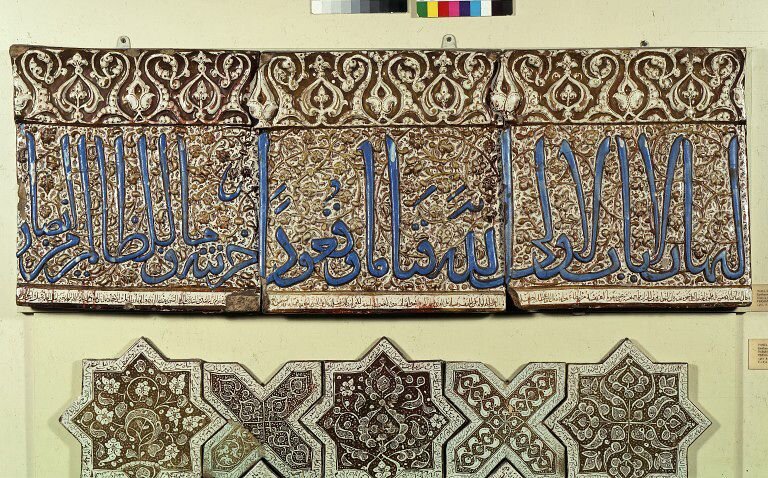Persian handicrafts: 13th-century panel of three tiles from frieze

TEHRAN - These tiles, being kept and displayed at the Victoria and Albert Museum in London, were once part of a magnificent frieze in a very important religious shrine in Mashhad, northeast Iran.
This panel of three tiles from frieze is probably handcrafted in the central town of Kashan during the Mongol invasions of Persia (Iran), according to the museum’s website.
The main text is from the holy Quran, but it is not continuous, as the tiles are from different sections of the frieze. They have been mounted together to show their most extraordinary feature - each tile overlaps the one to its left, hiding the join.
The Mongol invasions of Iran in the early 13th century created a close link between West Asia and China since both regions came to be ruled by Mongol viceroys. The Ilkhanids (1256–1353), a branch of the Mongols, ruled Iran at the same time as the Yuan dynasty (1271–1368) ruled China.
These dynasties maintained close cultural links with each other through trade by sea and, along the Silk Route, by land, and there was an influx of Chinese artifacts and designs into West Asia.
The production of tiles in Iran increased under the Ilkhanids, as they supervised repairs to monuments damaged during the Mongol invasions.
These three tiles are identical to a frieze that still remains at the shrine of Imam Reza in Mashhad, an important pilgrimage site for Shia Muslims. The lotus flowers in the projecting upper border of the tiles were one of the Chinese motifs introduced into the Islamic West Asia at this time.
AFM/MG
Leave a Comment